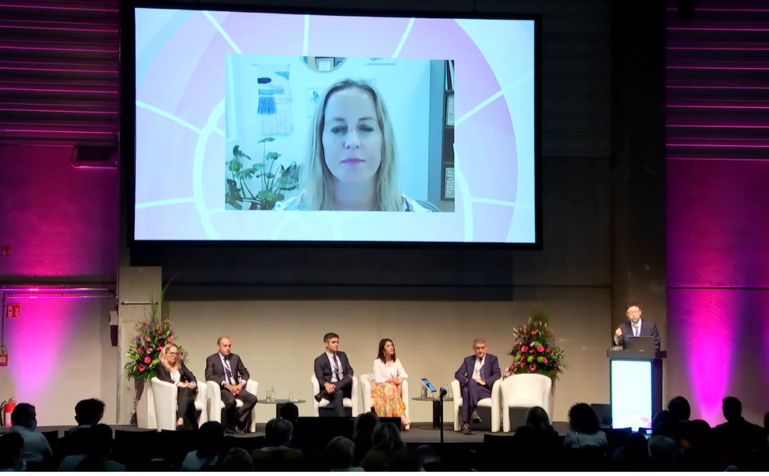Despite alternative modes of administering anticancer medicines have reinforced the idea that at-home cancer care may be sometimes feasible as well as preferred by patients, there are concerns about costs of and accessibility to these new opportunities.
Recent advances in the development of anticancer medicines in the form of pills, tablets and subcutaneous drugs could be key to pandemic-era attempts to minimise cancer patients’ exposure to coronavirus during active treatment. However, though the idea of hospital-at-home has been around for a number of years carrying expectations of improved quality of life for patients, it is still not a reality in oncology as challenges like suboptimal adherence to treatment, reimbursement issues and costs have yet to be overcome. COVID-19 is likely to be a driver for putting patients in control of administering their own treatments - but at what price?
Balancing patient preferences against potential harm
Since earlier this year, the ongoing health crisis has pushed medical oncologists to rethink the safe delivery of therapies within and outside the hospital. Whenever possible, a switch from in-hospital treatments to at-home cancer care was pursued with alternative formulations to intravenous injections, which have been made available to patients with cancer in many countries in recent times.
“Going to the hospital to receive invasive treatments is a harsh reminder that you are still a patient, irrespective of the stage you are at on your care path, and this can be hard to handle psychologically,” says Michela, a young woman who completed her maintenance therapy with trastuzumab at the European Institute of Oncology (IEO) in Milan in 2017. When Michela was removed the port-a-cath for intravenous administration of anticancer medicines, which had been in her body for over a year, she felt like her disease trajectory was nearing a positive end. After a nipple-sparing mastectomy plus axillary dissection, chemotherapy and weekly cycles of taxol, the transition to a subcutaneous administration of trastuzumab was smooth and free of side-effects.
In general, patients seem to welcome the idea of a faster and less invasive mode of cancer care delivery. In the interim analysis of the open-label, randomised crossover PHranceSCa trial, which was presented at the ESMO Virtual Congress 2020, 82 percent of women with HER-positive breast cancer who underwent both intravenous and subcutaneous administration modes showed a higher level of satisfaction with subcutaneous injections (165MO).
The subcutaneous formulation of trastuzumab was approved in Europe in 2013 to offer an outpatient option to women with HER2-positive breast cancer like Michela. This alternative route of administration of the monoclonal antibody, which has significantly advanced treatment for this patient population since it came on the market in the late 1990s, showed to be non-inferior in its subcutaneous formulation to intravenous trastuzumab in early breast cancer in the HannaH study (Lancet Oncol. 2012 Sep;13(9):869-78). These results were confirmed in the final analysis of the randomised trial six years later (JAMA Oncol. 2019;5(5):e190339).
The initial rationale for switching from intravenous to subcutaneous administration has been to reduce the time necessary for each infusion, from anywhere between 30 and 90 minutes all the way down to two to five minutes, making this therapy more manageable for healthcare staff and more convenient for patients in both adjuvant and metastatic settings. Today, this time saved takes on whole new importance, and the prospect of taking the treatment out of the hospital altogether is not far off.
Subcutaneous trastuzumab could contribute to making cancer care at home possible, but despite some early investigations into the potential of devices to self-administer the therapy (223P), it is currently still designed to be administered at the doctor’s office. “Safety is a primary limitation to self-administered treatments in oncology as side-effects are part of any cancer therapy, regardless of how mild and well-tolerated they may be,” says Prof. Nadia Harbeck, Head of the Breast Center and Chair for Conservative Oncology at the department of OB&GYN, University of Munich (LMU), Germany.
Limitations to at-home cancer care
There are plenty of examples from outside the oncology realm of subcutaneous therapies being safely self-administered: just think of the millions of diabetics who use insulin, or the patients who do their own heparin injections after orthopaedic surgery. In cancer units, the increasing number of oral medications now available has started a positive trend. Harbeck observes: “Today, our hospital settings are still more geared towards having patients come in for intravenous injections. But in breast oncology, for example, the large number of oral therapies are prompting us to reorganise our systems. I believe that the pandemic era, with its associated rise in virtual visits and consultations, is contributing to the acceleration of this process.”
A major limitation to any step forward is insufficient or improper compliance which has been often reported with oral anticancer treatment and can severely impede its efficacy (Cancer Treat Rev. 2013 Oct;39(6):610-21). Therapy-related side-effects are a common determinant of non-adherence to medications, although they are hardly self-reported by patients on oral medications since they are not seen routinely in the context of an infusion clinic.
“If we extrapolate to a scenario where subcutaneous trastuzumab is self-administered, the only way to check compliance would be to test blood levels of the monoclonal antibody in the patient on a routine basis: this is something that we do not do at the moment,” comments Harbeck, who nonetheless believes that investing in patient empowerment and doctor-patient communication could be enough to spot and correct any problems in taking medications correctly.
Of course, there can never be full control by physicians when patients administer their own treatment, which is why close monitoring and support is needed, for instance by deepening the involvement of oncology nurses.
Despite the current limitations, Harbeck believes that self-administered modes of treatment are a path towards more patient’s independence in the near future. “With proper training, women with breast cancer are already able to administer growth factors,” she notes. “The initial doses must be given in the presence of a physician because allergies have been reported in the first few applications and patients need to be properly trained. After about three cycles at the doctor’s office, however, patients may be ready to take the medicine at home, in particular when they are not receiving any other treatment.” Harbeck recommends that medical visits should still be planned for example every three months to check the therapies’ side-effects and efficacy on a regular basis.
From a patient’s perspective, being involved in the delivery of your own medicine often comes with a sense of empowerment, as Michela confirms. “I do an injection of hormone therapy every 28 days. This is something I do not feel as intrusive in my life,” she reports. “I call it ‘the injection’: it does not make me feel sick and I never feel that I have to do it because I had breast cancer.”
More manageable, but less accessible to patients
Despite self-administered cancer medicines can be a breakthrough tool for empowering patients in uncertain times, financial aspects risk to make this approach a benefit reserved to a few patients only. “In some countries, the incentives to prescribe intravenous infusions are stronger. It is not a matter of ill-will, but consultations for subcutaneous injections or oral therapies require time and staff resources that translate in to higher costs for these additional services to be offered,” Harbeck explains, though she sees no reason why certain administration modes should be better reimbursed than others. “The work that oncology teams have to do to manage side-effects is the same regardless of how the medicine is administered: drugs should be reimbursed only because they are effective,” she emphasises.
Alternative formulations of anticancer medicines like subcutaneous trastuzumab also comes with no biosimilars to compete with them. Much has been done with biosimilars since the first agent was approved in Europe in 2006, to cut the costs of expensive anticancer medicines, achieve sustainable cancer care and access to optimal cancer care as ESMO advocates (ESMO Open 2016;1:e000142).
Harbeck points out: “At the global level, the lack of biosimilars mean that some patients will not have access to these medicines and modes of administration just because they are more expensive. The pandemic may be changing mindsets worldwide about the importance of the benefits and the manageability of the risks that come with making patients more autonomous with their treatment, but its economic consequences are sure to make cost considerations even more pre-eminent in health systems everywhere.”









